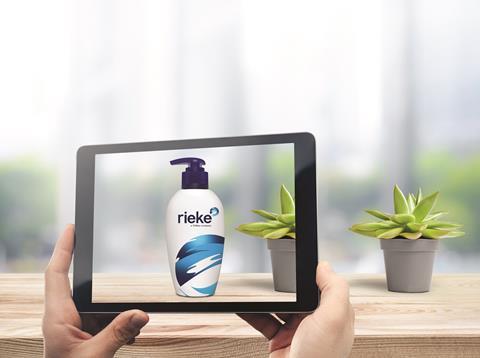
The scope of augmented reality is being explored by inquisitive minds in the industry, dedicating time and effort to research and accrue knowledge of the most valuable ways AR can be applied to the packaging sector.
Libby White picks the brains of digital services specialist Tom Lawrie-Fussey and Chris Houghton, brand innovation and packaging leader at Cambridge Design Partnership, a leading technology and product design partner.
Tom Lawrie-Fussey starts from the core. “We focus on challenging the why,” he says. “There are a lot of AR technology enablers in existence, but the key questions are where is AR applicable, and what is the legitimacy of the interaction? Innovation needs to be led by consumer needs rather than by technology, otherwise consumers will not engage.”
Chris Houghton adds, “Over the years we have witnessed what has worked and what hasn’t with AR. Some campaigns have been very on-brand and appropriate, whereas others don’t seem to have the valuable link between content and execution. It’s crucial to achieve ‘consumer truth’ and tie together experiences.
There are some great examples in the architecture and interior design sectors where AR overcomes ‘imagination barriers’. The technology needs to enhance or reveal something in the real world that physical packaging can’t.”
They hint at how AR could aid connecting the digital online experience with physical reality.
“We only need to look at leading online retailers as an example of reality not matching online perception: consumers returning goods as they don’t meet expectations is a prime example. AR could potentially bridge this gap,” enthuses Tom Lawrie-Fussey. “Have you ever chosen food online and then received a different size bag to what you were expecting? AR could solve problems such as this. Perhaps it could be used to translate the dimensions of a pack to a consumer – it could make significant changes to the value chain.”
Pack research
With 3D modelling, AR could also solve an underlying issue with traditional pack research. Jonathan Barrowman, founder and CEO of ‘Gorilla in the room’, a rising star in the tech scene which provides immersive research, offers his perspective:
“AR is a game changer in the competitive packaging sector as it provides better insight on which pack design will sell. This is especially critical as once a new pack has been manufactured and distributed the impact on sales is impossible to change.”
Gorilla in the room specifically developed AR pack tests for the packaging industry. In addition to data on which pack design people ‘like’, it’s starting to map and measure respondent interactions with 3D AR packs e.g. dwell time on particular designs, whether they zoomed into a particular feature, the area of the pack they most liked etc. Jonathan Barrowman comments, “It’s like eye-tracking in AR and it will herald new behavioural data insights for the packaging industry.”
He states that behavioural economics highlights the flaws in traditional pack research where people are asked to look at pictures or mock-ups of new pack designs (on a computer screen or in a focus group) and say which they prefer. “It isn’t a realistic representation of people’s point-of-purchase decisions because it’s a flat 2D image. AR allows consumers to look at a realistic 3D replica of the product in the real world (on their kitchen counter, on a supermarket shelf etc) and view it from every angle.”Product development
AR is also being put to the test to aid product development by Rieke Packaging Systems, a global leader in innovative closures, dispensing and packaging systems.
It was looking for a solution to work closely with its clients, as well as to assist training. Ed Wills, global marketing director, Rieke Packaging Systems comments, “We realised we could use AR on our website for customers to view in real time on their desktop or smartphone.”
Rieke has initiated an e-commerce range. “This means you can have samples on your desk right away just by browsing your phone. I think that is really valuable,” says Ed Wills. The company can also use AR to liaise with its product development and sales teams as an internal tool – it’s not just an external client-facing solution. This is key, as Ed Wills highlights, “When you have thousands of people across Rieke worldwide, it’s not always possible for everyone to work on every aspect of a project face-to-face.”
“You can move the process forward far more quickly with either your customer or colleague on the other side of the world. It can really speed up product development. With AR, customers can have the ability to access samples immediately on the phone rather than waiting for a sample of the product to arrive in the post.”
Ed Wills underlines that this solution is not considered a replacement for physical samples long-term, “but say for example you require a dispensing pump for a particular purpose: you can go to the website and look at a sample right away. The client can then say instantly whether they want to progress.” This saves time and cost, and of course it’s also a far more sustainable approach.
Since it is digital, Rieke is also able to brand and personalise AR models using the customer’s own colours. Ed Wills points out, “The equivalent physical sample would take weeks if not longer to bring it to that point.”
He concludes, “I firmly believe that we’re still only in the infancy stage of AR, and we’re likely to see a massive uptake in the years to come. They’re even putting AR into Google search results now so it will be as common as video files on websites in the future.
“People will expect it, whatever they’re buying.”













